Cinematographer Mandy Walker, ACS, ASC, discusses her work on "Elvis", by Baz Luhrmann
Hélène de Roux: What did you know of Elvis before the film?
Mandy Walker: He died when I was a little girl, but I remember his music, which my parents used to listen to, and his movies. He is a special character, who influenced America and vice versa.
Baz and I have known each other for 20 years so we’ve developed automatic ways of working together. This was a very important collaboration for me. He got me involved very early on the project and we immediately started doing research with the other departments, costumes, makeup, etc. He first told me about the story, the emotions he wanted the audience to feel, the feelings of the characters...I was at Austin’s auditions (Austin Butler, starring role) with my Leica, and I started figuring out camera angles for his performance, for the way he moved, I was looking to find from what angles he looked the most like Elvis. Baz was also taking pictures and I remember sometimes we realized that we had taken exactly the same ones! That’s the kind of artistic relationship we have.
HDR: How did you navigate through all the images of Elvis that already exist, the many hours of video and music?
MW: We watched everything. Baz wanted Austin to be an exact replica of those models, which Austin managed to do, and he wanted the cinematography for the film to be as well. So I studied the show known as “68 Comeback Special”, produced by NBC, and the two documentary films that had been made about Elvis’ shows in the 1970s to figure out which cameras and which lenses they’d used. While we were building the sets, the camera crew and I planned out the exact positions of the cameras. Then, I studied the lighting. The lighting includes spotlights from TV studios and concert halls from the 1960s. I asked the set design department to locate these old lamps, and I fit them out with more flexible LED lights that I could control from my DMX console. This involved 4 months of preparation and 85 days of shooting, which is quite fast given there were over a hundred sets. One of the concert halls was huge, so we built it in studio.
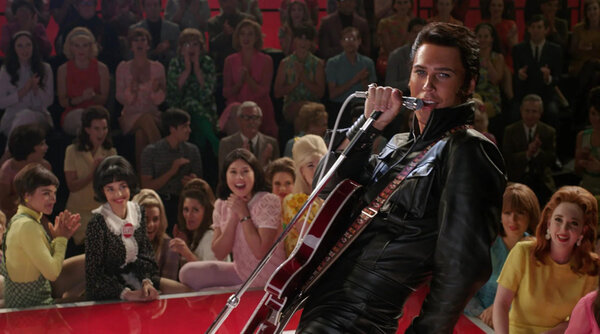
We did a lot of rehearsals, with the cameras on stage with Austin, in order to successfully reproduce the pre-existing images exactly, and to get him used to having the camera very close to him. The cameras had to dance with him. I knew the music, the songs, the lyrics, I could move with him perfectly. Some images were also taken directly from period documentaries, and we graded them to match the others.
My 87-year-old parents watched the film three times, because they had seen Elvis’ movies and listened to his music, and they loved him; people my age know him somewhat, but mainly for his songs; teenagers don’t know who he is, to them he’s just a Halloween costume. So, I wanted the film to be accessible and modern, in parallel with the archive-oriented part. This also comes across through the soundtrack, with original songs – sung by Austin – and more contemporary pieces. A lot of teenagers have seen this movie, and they learnt a lot about this iconic character and how he changed American culture through his music. He was a pioneer in many fields, and we wanted not only to show this to the youngest viewers, but also to get them to feel what it meant at that time.
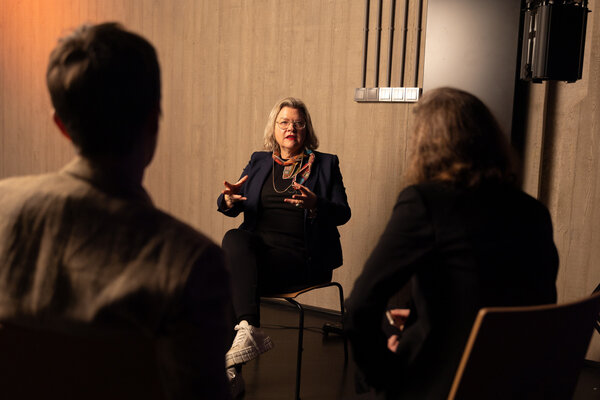
HdR: Concretely, how did you treat these more modern parts visually?
MW: By the way in which the sequences reproduced from archive images intertwine with those that are more part of his personal story, such as his relations with Colonel Parker, with Priscilla and all the people who were close to him. Very early in preparation, Baz said to me: “When he dances, the camera dances with him, and when he flies away, so do we. But when he’s at the heart of the drama, we’re going to be more elegant and observant, with a more static camera.” I worked to integrate these different styles into a visual language that remains homogeneous and is always in tune with the emotion of the scene.
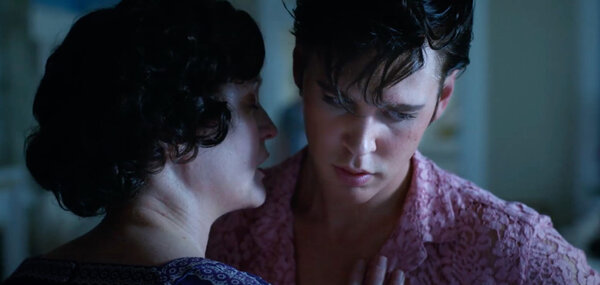
Without ever losing sight of these intentions, and because we were extremely well prepared, we were also able to adapt to the feeling we were getting from the actors’ performances. For example, the break-up scene, which begins in the bedroom and continues in the stairway, had to be shot in two stages because the sets were not adjacent to one another. But during rehearsals, there was such emotion, I had a look with Baz and we decided to shoot the whole scene at once. So, we shot the first part, with three cameras, then we all ran together to the other set to continue the scene.
Pascale Marin: You used several series of lenses, spherical and anamorphic. Elvis was filmed in anamorphic in Las Vegas in 1970, is that what motivated you to make that choice?
MW: Yes, exactly. It was part of our idea to precisely reproduce those images, which are a part of our collective imagination. When you watch a movie from the 1970s, it’s going to be shot in anamorphic, while a movie from the 1950s will be in spherical.
I had the lenses for this film custom-made to be replicas of the lenses that had been used on Lawrence of Arabia, on the basis of the few lenses that have been kept in storage. It took a bit of back-and-forth between us and Panavision to find the perfect image for what we were looking to create. Today’s anamorphic lenses are more accurate and realistic, they have these horizontal bluish flares which I didn’t want because they weren’t appropriate to the period. I also didn’t want you to see the cutout of the iris outline in the bokeh. I went to see Dan Sasaki, at Panavision, and he reinstated the aberrations, he made the bokehs softer and more oval, recolored the flares, resaturated and reconstrasted the lenses. I wanted it to be more organic, as though it were shot on film, so I had little things like that adjusted.
PM: And you customized all of your series of lenses?
MW: Yes, each one three time, during screen-testing. I was in Australia and Dan in Los Angeles. For the first iteration, Baz and I traveled to Panavision to see Dan, and we discussed the story, the images, the feelings that we wanted to create. He suggested four different types and I brought a Petzval lens with me that was based on a 19th century projector lens. It only focuses at the center, and gives a vortex effect on the edges. Dan reworked it to make it suitable for filming, including making it able to cover the large sensor of the Alexa 65, and we used it for the sequence where Elvis passes out, and for the dreams and flashbacks. I don’t know how Dan manages to do it all. The way I talk to him is less as a technician and more as an artist. I show him pictures and paintings, and he interprets my intentions optically. He says his work with the lenses is to recreate the third dimension. Film is two-dimensional and the third dimension comes from focus, bokeh, soft edges, etc. I have worked with him on all my films for the past 15 years, since my arrival in the USA.
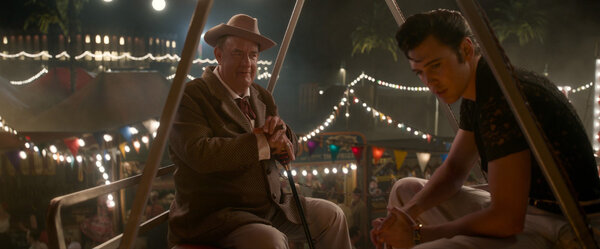
PM: You said at yesterday’s conference that you didn’t feel like a “woman cinematographer”, but simply a cinematographer, without any notion of gender. But how does it feel to be a role model for young female cinematographers?
MW: I don’t see myself like that, but in all humility, I understand that there are only 5-9% of women cinematographers. I was one of the first, especially in Australia. I think there were two of us and the other ended up giving up. I had some hard times, getting accepted by the crews, etc. But once I’m on a film, it doesn’t matter.
PM: The problem is being given the opportunity to make a film!
MW: Exactly, that’s why I’m always attentive about the diversity of my crew. There are people around us of different skin colors and social backgrounds and I want to see that on set. So, I make an effort to locate good technicians, who happen to be women and people of different origins. And if I can’t find anyone, I hire two interns, a woman and a person of color.
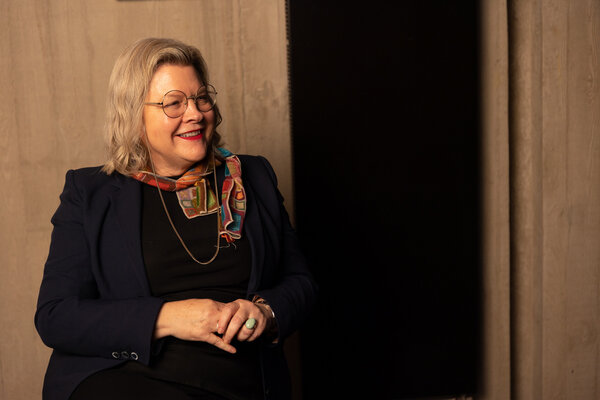
PM: Baz Luhrmann says you’re a strong leader, but you treat your team with respect.
MW: I didn’t go to film school, I started at the bottom of the ladder, as a second assistant camera, and I saw how the relationships worked on a set, how I was treated. Sometimes very badly. I realized that no one respected a cinematographer who yelled at his team. No one is going to give their all if you don’t treat them well. So, I always try to make my department a zone where we respect each other, and to make sure that the case in other departments, so that we can all work together in harmony. It’s very important.
Baz is like that too. He’s like an orchestra conductor, he gets involved with each member of the team, he talks to them about the emotion, the acting, how to work, dance with the actors. And they love it, because they become part of the collaborative creative process. On many films, the technicians don’t have the opportunity to talk with the director, it’s a waste. There they know they are doing their job because Baz asked them to. We had a lot of fun on the shoot, it was a big challenge, but we prepared a lot and got everyone involved.
PM: I find it unfortunate that you are the only woman to be nominated in the main Camerimage competition this year, but I am very happy that it is you!
(Article written by Margot Cavret, for the AFC, from an interview conducted by Hélène de Roux and Pascale Marin, AFC, transcribed by Clément Colliaux, and translated from French by A. Baron-Raiffe)
 En
En
 Fr
Fr








